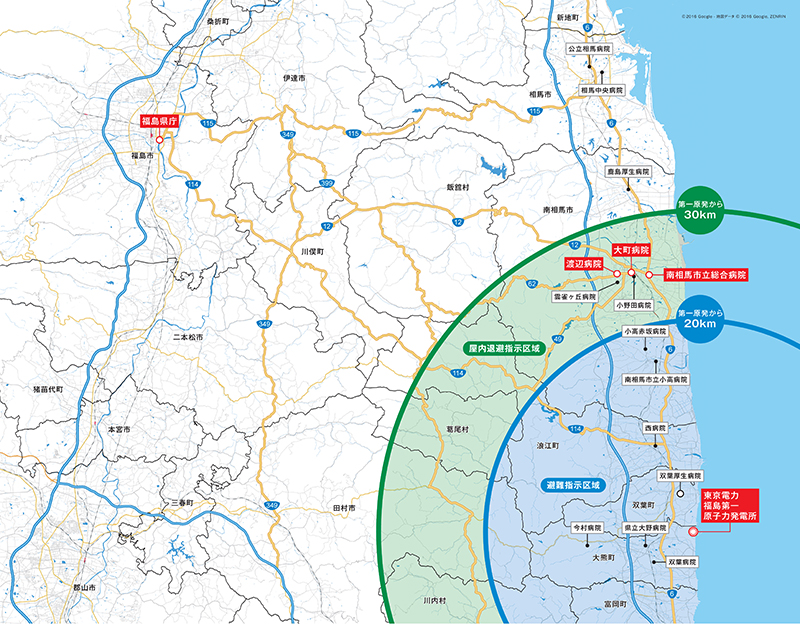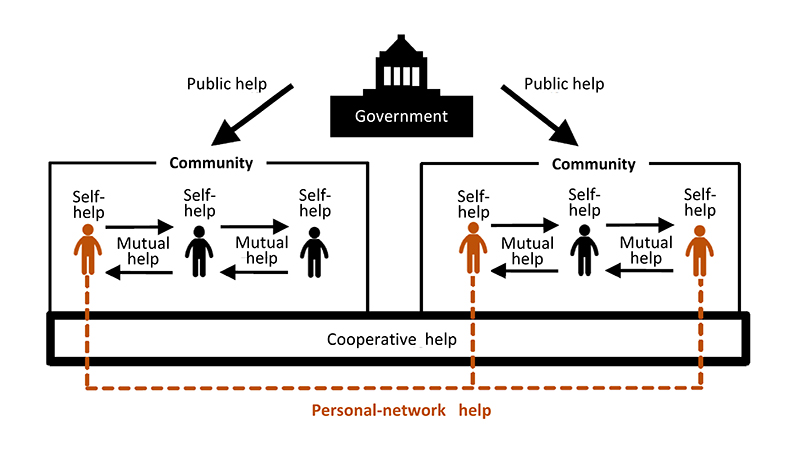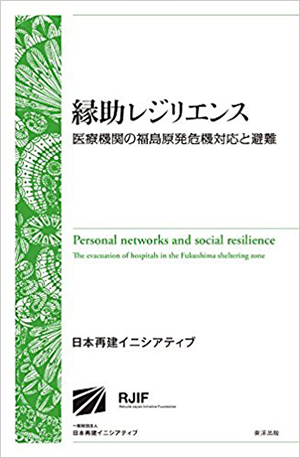

In order to assess the challenges of and to draw lessons from the Fukushima nuclear accident before memories fade with the passage of time, this project investigated the medical system and evacuation of hospitals during the crisis.
The project conducted interviews surveying six hospitals, pharmacies, elder facilities, and administrative agencies, all located within the sheltering zone, a 20-30km area from TEPCO’s Fukushima Daiichi Nuclear Power Station. This area was where people were forced to discern the risks of both radiation exposure and evacuating for crisis response at the time of the accident. During the one-year field investigation, the project members conducted detailed interviews with hospital directors and staff as well as those who worked for local governmental agencies, about what kinds of challenges hospitals faced at that time, how they tried to overcome them, and from them what kind of lessons they have learned.
The traditional disaster damage-prevention plan has been based on the following ideas: self-help (self-preparation for emergencies), public help (governmental support), mutual help (mutual support among neighborhoods), and cooperative help (institutionalized mutual cooperation, such as disaster partnership agreements with other communities), However, through the investigation, it was revealed that all of the above could not function adequately during the crisis response to the Fukushima nuclear disaster. In fact, “Personal-network help,” support based on more moderated rather than institutionalized networks, worked best under these conditions.
Report
“Personal networks and social resilience
– The evacuation of hospitals in the Fukushima sheltering zone” (Japanese)
This project investigated the critical situation of medical institutions in the sheltering zone, a 20-30km area from TEPCO’s Fukushima Daiichi Nuclear Power Station, at the time of accident. During the crisis response to the Fukushima nuclear disaster, ideas such as self-help, public help, mutual help, and cooperative help, on which the disaster damage prevention plan has been traditionally based, did not function, but “Personal-network help,” support based on more moderated rather than institutionalized networks, worked best. The report advocates “Personal-network help,” a new concept of disaster prevention and disaster response for surviving a crisis.
Author: Rebuild Japan Initiative Foundation
Publisher: TOYO PUBLISHING
Price: ¥1,500 +Tax
First Published: February 28, 2017 (General Release: May 15, 2017)
ISBN-13: ISBN: 978-4809678684
Survey result
- Risk trade-off between evacuation and remaining
- Supply and logistics support from outside the area is essential for those who remain in the area and the weak who cannot evacuate by themselves
- Since the area’s ability to gather and process information, as well as its decision-making and regulating ability, cannot catch up developments, such functions should be taken on by other areas outside as soon as possible

Project Director

Yoichi FUNABASHI
Chairman, the Rebuild Japan Initiative Foundation
Project Members (titles during project)

Masaharu TSUBOKURA
Researcher, Division of Social Communication System for Advanced Clinical Research, The Institute of Medical Science, The University of Tokyo

Goro UMEYAMA
Disaster prevention consultant

Kazuto SUZUKI
Professor, Hokkaido University Public Policy School

Kay KITAZAWA
Research Director, the Rebuild Japan Initiative Foundation
te School of Frontier Sciences, The University of Tokyo. She specialized in Geographic Information Systems (GIS), consulting mainly in Europe, as part of her PhD study at The Centre for Advanced Spatial Analysis, University College London. She has worked on many projects in research and consulting on urban policy in private sector and think tanks, and served as the staff director of the Independent Investigation Commission on the Fukushima Nuclear Accident.
 APIニュースレター 登録
APIニュースレター 登録